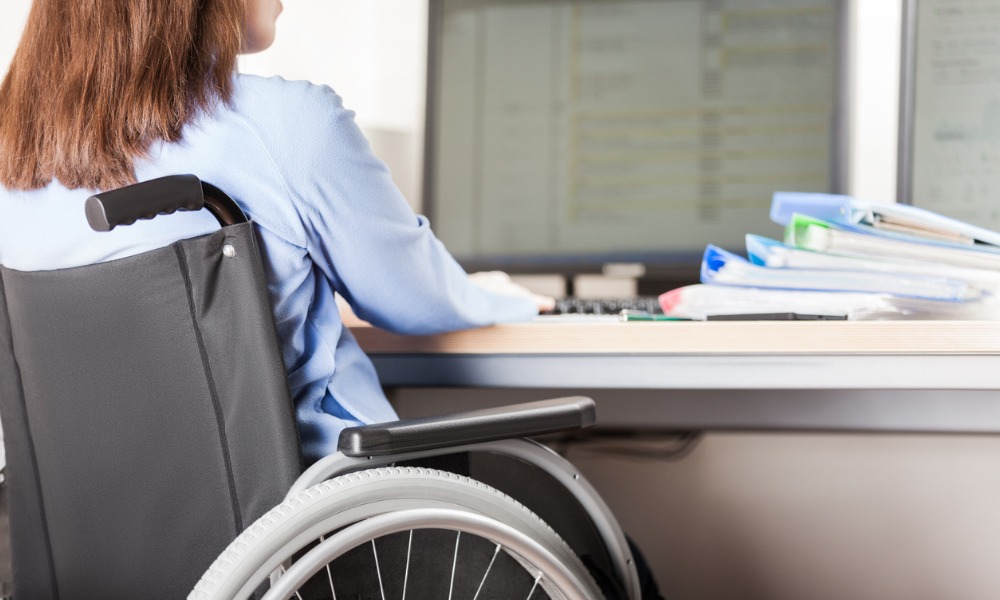Mr. Abdi was involved in a motor vehicle accident on June 92, 2017. He suffered trauma, sustained a brain injury and applied to TD General Insurance Company (TD) for enhanced benefits arguing that he suffered a catastrophic impairment pursuant to the Statutory Accident Benefit Schedule.
A designation of catastrophic impairment would increase the policy limits available to the Applicant from $65,000 to $1,000,000 and make additional benefits available including housekeeping benefits.
Test to Meet for Catastrophic Impairment
Under section 3.1(1)(4) of the Schedule (Criterion 4) a two part test is imposed. The first is a requirement to have diagnostic evidence of brain trauma on imaging. For instance, positive findings on an MRI or CT scan satisfies the first branch of the test.
The second part of the test is defined under criterion 4(ii) of s. 3.1(1) of the SABS: a brain injury that when assessed in accordance with the Glasgow Outcome Scale (the “GOS”) and the Extended Glasgow Outcome Scale (the “GOS-E”) results in a rating of Upper or Lower Severe Disability, six months or more post-collision or a Lower Moderate Disability one year or more post-collision.
For reference, the GOS-E ratings are as follows:
|
1 -Dead |
|
|
2 – Vegetative State (VS) |
Condition of unawareness with only reflex responses but with periods of spontaneous eye opening |
|
3 – Low Severe Disability (SD-) 4 – Upper Severe Disability (SD+) |
Patient who is dependent for daily support for mental or physical disability, usually a combination of both. If the patient can be left alone for more than 8 hours at home it is upper level of SD, if not then it is low level of SD. |
|
5 – Low Moderate Disability (MD-) 6 – Upper Moderate Disability (MD+) |
Patients have some disability such as aphasia, hemiparesis, or epilepsy and/or deficits of memory or personality but are able to look after themselves. They are independent at home but dependent outside. If they are able to return to work even with special arrangement it is upper level of MD, if not then it is low level of MD |
|
7 – Low Good Recovery (GR-). 8 – Upper Good Recovery (GR+) |
Resumption of normal life with the capacity to work even if pre-injury status has not been achieved. Some patients have minor neurological or psychological deficits. If these deficits are not disabling then it is upper level of GR, if disabling then it is lower level of GR. |
With respect to the administration of the GOS-E interview, an assessment by an occupational therapist to determine a person’s disability and level of function is a useful tool for the physician or neuropsychologist conducting the GOS-E assessment to rely upon. According to section 45(2)1 and 2 of the SABs, an assessment to determine whether an applicant with a brain injury has a catastrophic impairment must be completed by a physician or a neuropsychologist.
The Tribunal Decision
Mr. Abdi was denied by his own insurer and he applied to the Licensing Appeal Tribunal (LAT) to dispute his insurer’s finding. At first instance, the LAT rejected his status as catastrophically impaired under the GOS and GOS-E as a result of the brain injury. The Adjudicated upheld this decision on February 16, 2022 in the Reconsideration Decision.
Importantly, the LAT commented on the Tribunal’s procedural role in determining the Applicant’s status under the GOS-E. Unlike the judicial system, whereby a Trier of Fact relies on experts to support their findings, the LAT refused to allow experts the same level of authority. Instead, the Tribunal itself focused on each part of the GOS-E checklist to determine whether the applicant could participate in the activity absent a non-brain physical injury or psychological injury. If an Applicant is unable to participate in activities because of their brain injury, then that must be included in the GOS-E scale.
Secondly, the Adjudicator rejected the argument that the timing of the determination regarding whether the applicant meets the GOS-E was constrained to the initial GOS-E assessment within the first year of the accident. Instead, the adjudicator chose a more flexible approach and relied on the insurer’s assessments which were conducted 24 months post-accident.
Appeal to the Divisional Court
At the Divisional Court, Mr. Abdi argued that the Adjudicator erred by applying an unduly restrictive test and looking at the brain injury “alone” instead of proving that the brain injury was a “but for” cause of the impairment.[1] He stated that the Adjudicator erred in discounting the psychological and physical disabilities that were not solely caused by the brain injury.
The Divisional court held that the Adjudicator did not restrict her consideration to impairments exclusively or solely attributed to the brain injury. While she did not use the terminology “but for” in her decision, her approach contemplated that physical and psychological impairments caused by or related to the TBI were to be considered in administering the GOS-E.
Conclusion: Important Take Aways Regarding Catastrophic Impairment on the basis of Brain Injury
While Mr. Abdi was ultimately not found catastrophically impaired, this case and its trajectory provides insight into how the LAT makes its determination. On appeal, the Divisional court gives much deference to the Tribunal’s findings of fact, which is why the evidence provided at the first instance is so important.
Below are the key takeaways:
- The LAT will not defer to expert opinion but rather will apply its own GOS-E analysis based on the evidence before it;
- The Adjudicator is not limited to one point-in-time assessment but is at liberty to use assessments outside of the one-year mark to make its determination;
- In accordance with the SABS, a catastrophic impairment assessment following the GOS-E form must be completed by a physician or neuropsychologist;
- The timing of the evidence may affect the weight of the evidence;
- Physical and/or psychological impairments caused by or related to the traumatic brain injury will be considered in administering the GOS-E;
- The applicant’s pre-accident level of function is relevant to determining whether the applicant is catastrophically impaired.
***
 Michelle Kudlats is a Partner at Neinstein Personal Injury Lawyers LLP. Her practice is focused on personal injury litigation including motor vehicle accidents, occupier's liability, and long-term disability cases, as well as medical malpractice. Michelle is known as a compassionate lawyer who keenly understands how to tell her clients' stories to optimize their access to justice.
Michelle Kudlats is a Partner at Neinstein Personal Injury Lawyers LLP. Her practice is focused on personal injury litigation including motor vehicle accidents, occupier's liability, and long-term disability cases, as well as medical malpractice. Michelle is known as a compassionate lawyer who keenly understands how to tell her clients' stories to optimize their access to justice.
As a litigator, Michelle prides herself on being the voice for her clients. She has extensive experience across the tribunal system, conducting arbitrations, and appearing at trial including her most recent victory in Hemmings (litigation guardian of) v Peng (2022 OJ No 2674). Michelle's strength in deciphering complex medicine and facts has made her an excellent and frequently referred advocate.
Michelle is a proud graduate from the University of Western Ontario Law School. Prior to that, Michelle obtained her Honours degree in Political Science, focusing on the judicial system, public policy, and social justice. Michelle is often asked to speak on medical-legal topics, including at the University Health Network's Brain Injury Conference.
[1] 2023 ONSC 3536 at para 27





